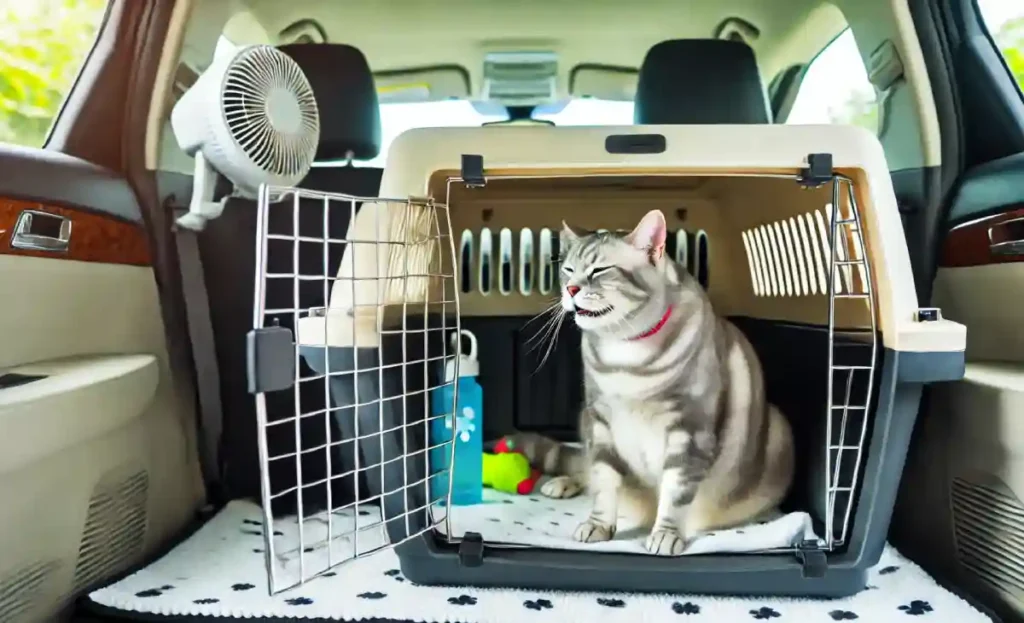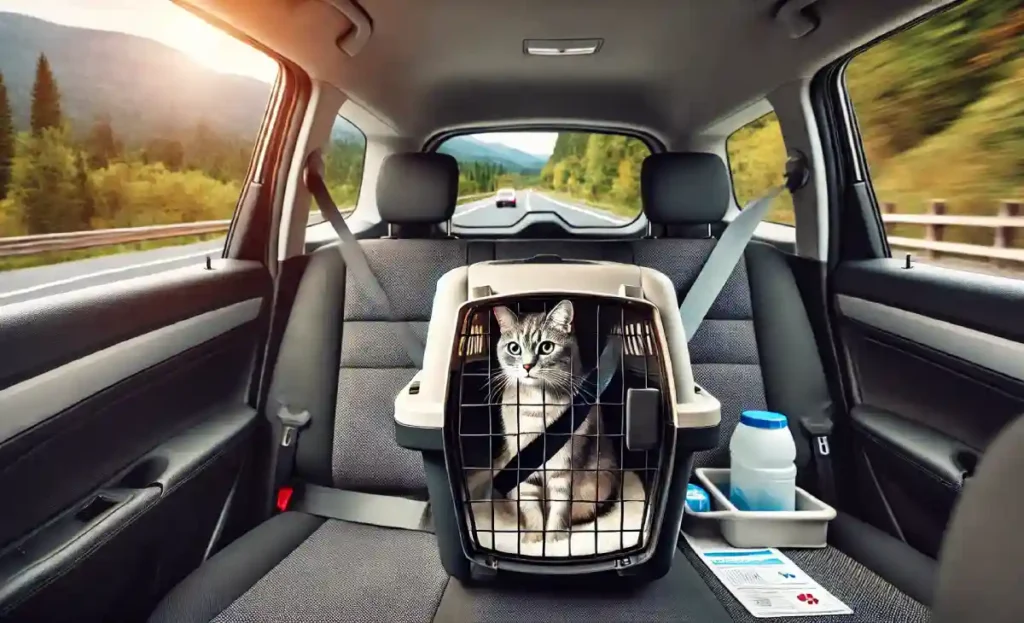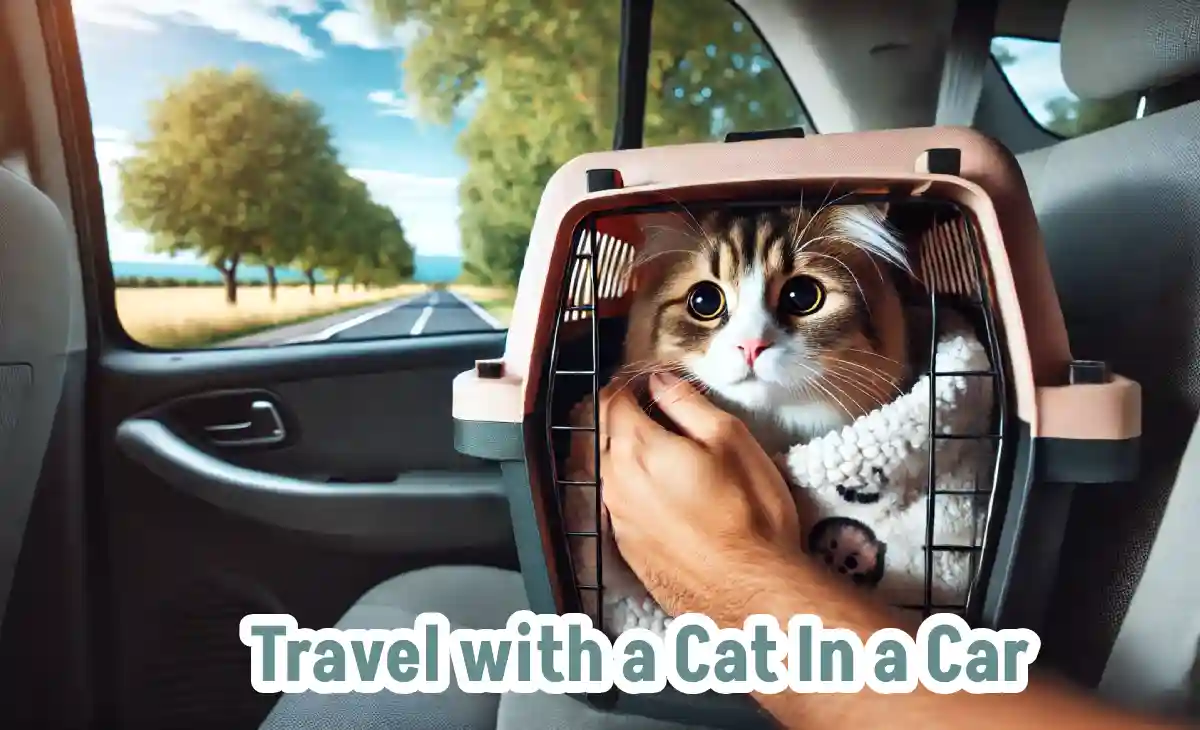Traveling with a cat can seem overwhelming, but with the right preparation, it becomes manageable and even stress-free. Did you know that around 58% of pet owners prefer to drive with their pets rather than fly?
Cats are creatures of habit, and changes, like car rides, can make them anxious. The key to a smooth trip lies in understanding your cat’s needs, creating a calming environment, and ensuring safety throughout the journey.
In this guide, you’ll learn simple steps to make your car trip with your cat comfortable and hassle-free.
Preparing Your Cat for the Trip
Before hitting the road, it’s essential to prepare your cat for the journey. Cats are generally uncomfortable with travel, so it’s best to ease them into the process. Preparing well in advance helps your cat adjust to the idea of car travel.
Acclimatize Your Cat to the Carrier:
Cats tend to feel stressed in unfamiliar environments. A carrier serves as a secure space for your cat during travel, but it can take time for them to get used to it. Start by introducing the carrier a few days before the trip. Place the carrier in a familiar spot in your home, and allow your cat to explore it. Add a cozy blanket or a favorite toy to make it more inviting. This will help your cat associate the carrier with comfort, rather than fear.
Cats also prefer a clean space, so ensure the carrier is cleaned regularly. You might want to try a pheromone spray that mimics the calming scent produced by cats themselves. It’s a great way to help reduce stress.
Take Practice Car Rides:
Practice makes perfect. Cats don’t naturally love car rides, so start with short practice drives. These short trips will help your cat get used to the movement and sounds of the car. As your cat becomes more comfortable, gradually increase the length of each trip. This will ease the anxiety associated with long car rides.
During these practice trips, always ensure your cat is securely fastened in the carrier. Safety is paramount, and an unrestrained cat in a moving vehicle can cause distractions or accidents.
Essential Items for Traveling with Your Cat

Traveling with a cat requires more than just placing them in a carrier. You need to ensure you have the right supplies to keep your cat comfortable throughout the journey.
Pack a Cat Travel Kit:
Before setting off, make sure you’ve packed a travel kit with essential items for your cat. Here’s what you’ll need:
- Food and water: Pack enough food and water for the trip. Use portable bowls that are easy to fill and won’t spill. Offer small amounts of food and water during stops.
- Portable litter box: Bring a portable litter box and litter for longer trips. Some cats may not use the litter box during the trip, but it’s better to have it available in case they need it.
- Favorite blanket or toy: Having a familiar object will comfort your cat during the trip.
- Medications or calming aids: If your cat gets overly stressed, consider asking your vet about medications or natural calming aids.
By packing these items, you’ll be prepared for most scenarios and can address your cat’s needs along the way.
Proper Carrier and Safety:
Not all carriers are created equal. Choose a sturdy, well-ventilated carrier that allows your cat to sit, lie down, and move around comfortably. Make sure it has a secure door and won’t collapse during the trip. Always place the carrier on the floor of the car or strap it securely with a seatbelt to avoid any sudden movements.
How to Keep Your Cat Calm in the Car?
Cats are sensitive animals, and being in a car can cause them stress. Keeping your cat calm during the trip is vital for both their well-being and your peace of mind. Here are several ways to help maintain a calm environment for your cat.
Create a Relaxing Atmosphere:
One effective way to keep your cat calm is by controlling their surroundings. Covering the carrier with a light blanket or towel can block out unfamiliar sights and reduce anxiety. Make sure the car temperature is comfortable, as cats can easily become overheated or chilled. Avoid any strong air conditioning directly blowing on your cat.
Use Calming Products:
Many pet owners use calming products, like pheromone sprays or diffusers, that help reduce stress for cats during travel. These sprays mimic the calming scent that cats produce, creating a sense of familiarity and security. You can spray the inside of your cat’s carrier before the trip to create a soothing environment.
Additionally, playing calming music at a low volume can help. There are even specially designed music playlists meant to calm pets during stressful situations, including car rides.
Managing Longer Trips with Your Cat

Longer car trips with cat require a bit more planning than short ones. If your journey will last several hours or more, you’ll need to make sure your cat is as comfortable as possible for the duration.
Take Regular Breaks:
Just like humans, cats need breaks during long car rides. Schedule regular stops every 2-3 hours to allow your cat to stretch, drink water, and use the litter box if needed. Keep your cat inside the carrier while you’re at rest stops, as unfamiliar environments can be overwhelming. If your cat must exit the carrier, ensure they are securely leashed and in a safe, enclosed area.
Hydration and Feeding:
Keeping your cat hydrated is especially important during long trips. Offer water during breaks, but avoid feeding them immediately before or during the ride, as this can cause motion sickness. If your trip lasts an entire day or more, feed your cat lightly at regular intervals to avoid an upset stomach.
Dealing with Car Sickness in Cats
Some cats experience motion sickness during car rides, leading to symptoms like drooling, vomiting, or excessive meowing. Motion sickness can make the trip unpleasant for both you and your cat, so it’s important to know how to manage it.
Preventing Motion Sickness:
To reduce the chances of motion sickness, avoid feeding your cat immediately before the trip. Offer a light meal a few hours before departure. Keep the car well-ventilated and avoid sudden stops or turns that might trigger nausea.
If your cat has a history of motion sickness, consult your veterinarian. They may recommend medication to prevent nausea or offer tips on how to manage it naturally.
FAQs
How can I make my cat feel more comfortable during the trip?
Familiarity is key. Bringing along a blanket or toy your cat loves can make them feel more secure. Also, try covering the carrier with a light cloth to block out unfamiliar sights.
Should I let my cat out of the carrier during the trip?
No, keeping your cat in a secure carrier ensures both their safety and yours. A cat roaming freely in a moving vehicle can be dangerous and distracting.
How can I prevent my cat from getting carsick?
Avoid feeding your cat right before the trip and offer water during stops. If your cat frequently experiences motion sickness, consult your vet for medications or remedies.
Is it safe to give my cat sedatives for travel?
Always consult your veterinarian before giving your cat any sedatives. Sedatives can help extremely anxious cats but should be used under professional guidance.
Final Words
Traveling with a cat in a car doesn’t have to be stressful. With the right preparation and care, you can make the experience comfortable and safe for both you and your feline friend.
From choosing the right carrier to packing essential items and managing car sickness, these steps will help ensure a smooth trip. Remember, patience and preparation are the keys to success.




